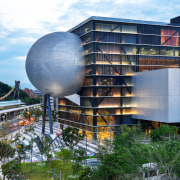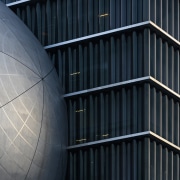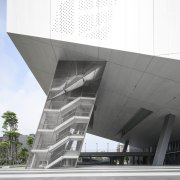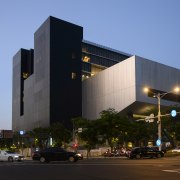Playing to a wide audience
Can a public theatre still be inclusive – accommodating the highbrow and the masses? The new Taipei Performing Arts Centre by OMA takes the stage and says 'yes'
By Rem Koolhaas and David Gianotten, OMA
An ancient art form for civic participation, theatre has evolved into the modern world as a vocation of the culturally refined, with its significance in daily life diminished.
Theatre space is valued for its potency for formal cultural productions, rather than its power to include and divert, and to be instantaneous.
Contemporary performance theatres increasingly become standardised: a combination of two different-sized auditoria and a black box, with conservative internal operation principles for authentic work.
Can a public theatre still be inclusive, accommodating the classic and the serendipitous, the highbrow and the masses, the artistic and the social – a place for the creative life of all?
Located at Taipei’s Shilin Night Market marked by its vibrant street culture, Taipei Performing Arts Centre is an architecture in limbo: specific yet flexible, undisrupted yet public, iconic without being conceived as such.
New theatrical possibilities
Three theatres plugged into a central cube allow performing spaces to be coupled for new theatrical possibilities.
The cube is lifted off the ground for a public loop to extend the street life of Taipei into the site.
New internal possibilities and connections of the theatre generate different relationships between producers, spectators, and the public, also a critical mass that works as a fresh, intelligent icon.
The central cube consolidates the stages, back stages, support spaces of the three theatres, and the public spaces for spectators into a single and efficient whole.
The theatres can be modified or merged for unsuspected scenarios and uses.
Globe Playhouse
The spherical 800-seat Globe Playhouse, with an inner shell and an outer shell, resembles a planet docking against the cube.
Intersection between the inner shell and the cube forms a unique proscenium for experimentation with stage framing.
Between the two layers of shells is the circulation space that brings visitors to the auditorium.
The Grand Theatre, slightly asymmetrical in shape and defying the standard shoebox design, is a 1500-seat theatre space for different performing arts genres.
Opposite to it and on the same level is the 840-seat Blue Box for the most experimental performances.
Super Theatre
When coupled, the two theatres become the Super Theatre – a massive space with factory quality that can accommodate productions that are otherwise only possible in found spaces.
New possibilities of theatre configurations and stage settings inspire productions in unimagined and spontaneous forms.
Public Loop
The general public – with or without a ticket – are invited into the theatre through a Public Loop, which runs through the theatre’s infrastructure and spaces of production that are typically hidden.
Portal windows along the Public Loop allow visitors to look at performances inside and technical spaces in between the theatres.
Different than typical performance centres that have a front and a back side, Taipei Performing Arts Centre has multiple faces defined by the theatres protruding above ground.
With opaque facades, these theatres appear as mysterious elements against the animated and illuminated central cube clad in corrugated glass.
A landscaped plaza beneath the compact theatre is a further stage for the public to gather, at this dense and vibrant part of Taipei.
Credit list
Project
Partners in charge
Associates
Competition phase – partners in charge
Architect of record
Acoustic consultant
Structure, MEP, building physics, fire engineer
Services engineer
Lighting consultant
Sustainability consultant
Geotechnical engineer
Architect
Construction phase – project director
Design development phase – project architects
Project architects
Theatre consultant:
Landscape designer, interior designer:
Structural engineer
Fire engineer
Facade engineer
Landscape consultant
Construction
Designed by: Cultural and inclusive
Story by: Trendsideas
Photography by: Individual photography credits
Home kitchen bathroom commercial design
Walk this way – garden pathways to lead your thinking
From farmhouse to farmstead
Sculptural highlight


















